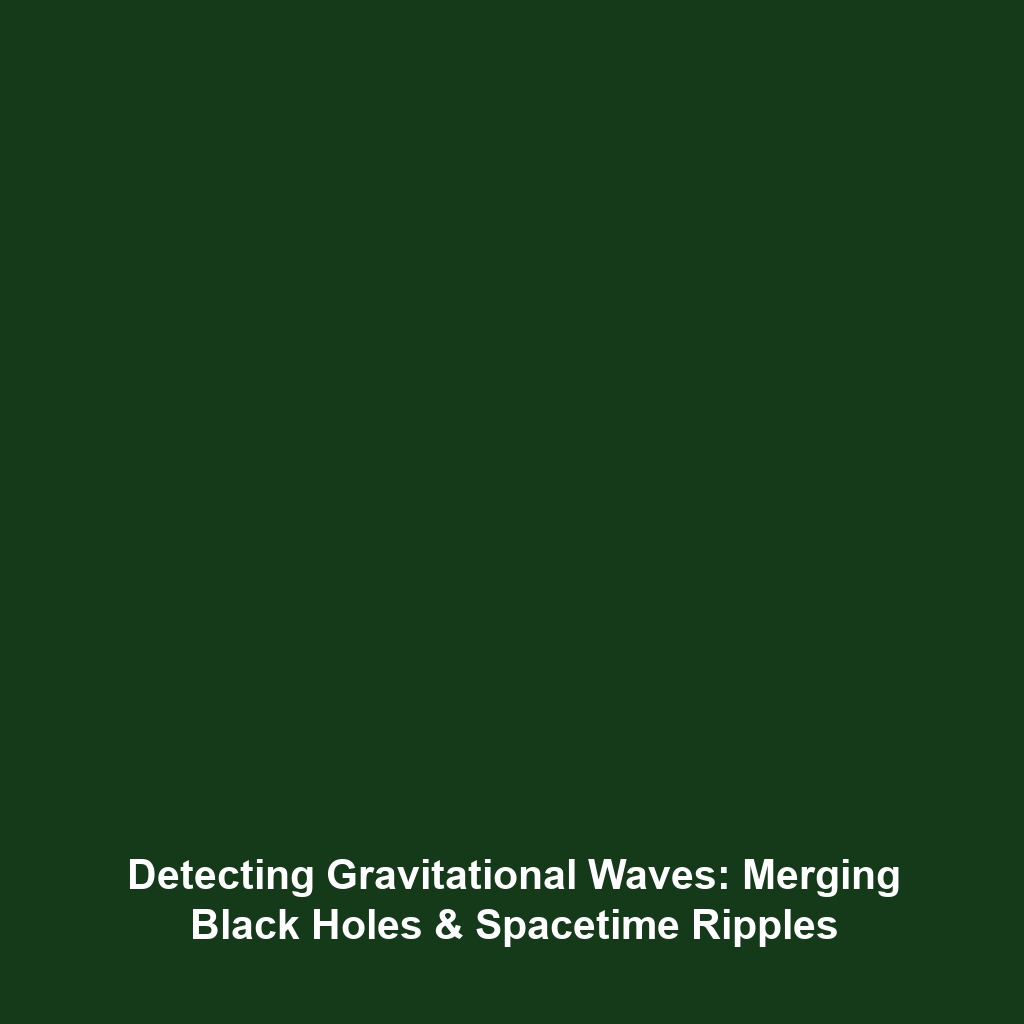Gravitational Lensing: How the Gravity of a Black Hole Bends Light from Background Objects
Introduction
Gravitational lensing is a fascinating phenomenon that occurs when the intense gravitational pull of a black hole bends the light from background objects, such as stars or galaxies. This effect not only allows astronomers to observe distant celestial bodies but also serves as a crucial tool in understanding the nature of black holes themselves. By studying the light alteration caused by these massive objects, scientists can glean insights into the properties of black holes and the evolution of the universe. Gravitational lensing represents a unique intersection of physics and astronomy, critically enhancing our comprehension of cosmic structures.
Key Concepts
Understanding Gravitational Lensing
Gravitational lensing occurs due to the warping of spacetime around massive objects, such as black holes. The bending of light is governed by Einstein’s theory of general relativity, which postulates that mass curves the fabric of spacetime:
- Einstein’s Theory of General Relativity: The underlying principle explaining how mass influences spacetime and light paths.
- Types of Gravitational Lensing: There are three primary types: strong, weak, and micro-lensing, each differing in the alignment and mass of the lensing object.
- Importance in Astronomy: Gravitational lensing provides an indirect method for studying objects that are otherwise too faint or distant to observe directly.
Applications and Real-World Uses
The applications of gravitational lensing in the realm of black holes are profound and multifaceted. Understanding how gravitational lensing works is pivotal for:
- Mapping Dark Matter: Gravitational lensing helps scientists identify and measure unseen dark matter in the universe, revealing its distribution.
- Detecting Exoplanets: This technique is utilized to discover new exoplanets by observing light variations due to lensing effects.
- Investigating Cosmic Evolution: Researchers apply gravitational lensing studies to enhance knowledge about galaxy formation and evolution.
Current Challenges
Despite its successes, the study of gravitational lensing faces numerous challenges, including:
- Data Complexity: The interpretation of lensing data can be complicated due to the intricate nature of light paths.
- Limited Observational Scope: Observational instruments may not always capture faint background objects effectively.
- Measurement Errors: Variabilities in astronomical measurements can lead to inaccuracies in deducing mass and position of lenses.
Future Research and Innovations
Future research in gravitational lensing promises exciting innovations, showcasing how advancements can shape our understanding of black holes:
- Next-Generation Telescopes: Projects like the James Webb Space Telescope aim to enhance observational capabilities, potentially leading to groundbreaking discoveries.
- Artificial Intelligence: AI technologies are being developed to improve data analysis from gravitational lensing observations, reducing processing time and increasing accuracy.
- Enhanced Computational Models: Improved simulations of gravitational lensing scenarios will provide better predictions and understanding of light interactions around black holes.
Conclusion
In summary, gravitational lensing is a powerful tool that illuminates the enigmatic nature of black holes while reinforcing key concepts in astrophysics. By harnessing this phenomenon, researchers can continue to unravel the complexities of the universe, unlocking secrets that were once thought to be forever obscured. As we look ahead, the integration of innovative technologies and methodologies will further our explorations into these cosmic giants. For more information on black hole research and related topics, consider exploring additional articles on our website.

Leave a Reply